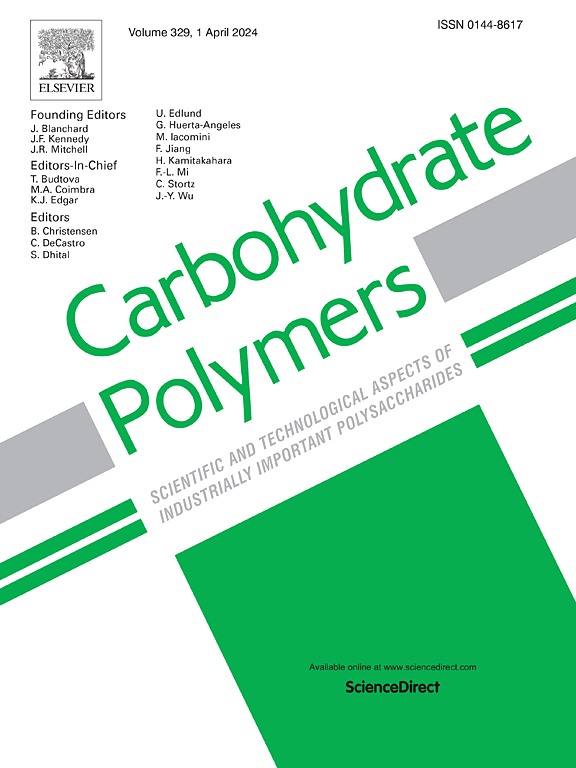Triboelectric nanogenerators based on antimicrobial, stretchable, and degradable copper-modified zinc imidazolate framework-8/chitosan composite films for sensitive medical care
IF 10.7
1区 化学
Q1 CHEMISTRY, APPLIED
引用次数: 0
Abstract
Triboelectric materials are critical for triboelectric nanogenerators (TENGs), as they not only determine output performance but also provide multifunctional capabilities, such as high antimicrobial activity and degradability. In this study, copper-modified zinc imidazolate framework-8/chitosan (Cu/ZIF-8/CS) triboelectric materials with excellent output performance, high antimicrobial activity, UV protection, and degradation were prepared by loading bimetallic Cu/ZIF-8 onto the surface of CS films. These materials were then used to fabricate xCu/ZIF-8/CS-TENG (ZC-TENG) based on the composite film of Cu/ZIF-8/CS. The loading of Cu/ZIF-8 onto the surface of CS films enriches the metal element species on the CS film surface and modifies the surface microstructure of the CS films. This modification promotes charge transfer on the film surface, enhances the films' antimicrobial mechanism of action, and ultimately improves the output performance and antimicrobial effect of TENGs. The optimized ZC-TENG demonstrated an open-circuit voltage (Voc) of 281.3 V, a short-circuit current (Isc) of 26.4 μA, and a maximum output power density of 239 mW·m−2 at 3 Hz. Additionally, the antibacterial rate reached 83.23%. Furthermore, the designed ZC-TENG exhibits exceptional stretchability, UV protection, degradability, and biocompatibility, properties that can propel its development for disposable healthcare self-powered sensors.

基于抗菌、可拉伸和可降解的铜修饰咪唑锌框架-8/壳聚糖复合薄膜的摩擦电纳米发电机,用于敏感医疗保健
摩擦电材料对摩擦电纳米发电机(teng)至关重要,因为它们不仅决定了输出性能,还提供了多功能功能,如高抗菌活性和可降解性。本研究通过在CS薄膜表面加载双金属Cu/ZIF-8,制备了输出性能优异、抗菌活性高、抗紫外线降解的铜修饰咪唑酸锌框架-8/壳聚糖(Cu/ZIF-8/CS)摩擦电材料。然后利用这些材料制备了基于Cu/ZIF-8/CS复合膜的xCu/ZIF-8/CS- teng (ZC-TENG)。Cu/ZIF-8在CS膜表面的负载丰富了CS膜表面的金属元素种类,改变了CS膜的表面微观结构。这种修饰促进了膜表面的电荷转移,增强了膜的抗菌作用机制,最终提高了teng的输出性能和抗菌效果。优化后的ZC-TENG在3hz下的开路电压(Voc)为281.3 V,短路电流(Isc)为26.4 μA,最大输出功率密度为239 mW·m−2。抗菌率达83.23%。此外,设计的ZC-TENG具有出色的拉伸性,防紫外线,可降解性和生物相容性,这些特性可以推动其开发一次性医疗自供电传感器。
本文章由计算机程序翻译,如有差异,请以英文原文为准。
求助全文
约1分钟内获得全文
求助全文
来源期刊

Carbohydrate Polymers
化学-高分子科学
CiteScore
22.40
自引率
8.00%
发文量
1286
审稿时长
47 days
期刊介绍:
Carbohydrate Polymers stands as a prominent journal in the glycoscience field, dedicated to exploring and harnessing the potential of polysaccharides with applications spanning bioenergy, bioplastics, biomaterials, biorefining, chemistry, drug delivery, food, health, nanotechnology, packaging, paper, pharmaceuticals, medicine, oil recovery, textiles, tissue engineering, wood, and various aspects of glycoscience.
The journal emphasizes the central role of well-characterized carbohydrate polymers, highlighting their significance as the primary focus rather than a peripheral topic. Each paper must prominently feature at least one named carbohydrate polymer, evident in both citation and title, with a commitment to innovative research that advances scientific knowledge.
 求助内容:
求助内容: 应助结果提醒方式:
应助结果提醒方式:


